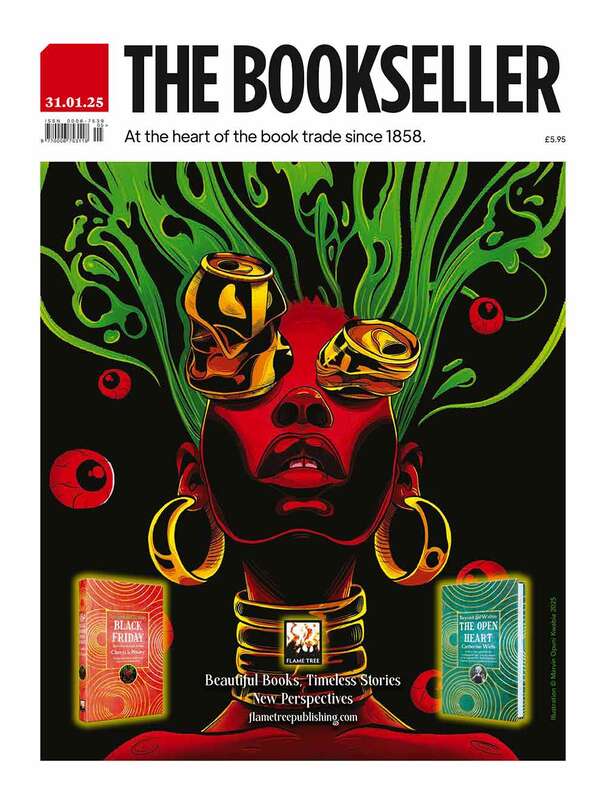You are viewing your 1 free article this month. Login to read more articles.
Chatto signs Edmund de Waal's 'extraordinary' Camondo story
Chatto & Windus has signed Letters to Camondo, an “extraordinary” book penned by Edmund de Waal during the first lockdown that tells the story of the Jewish Camondo family in Paris.
Publishing director Clara Farmer bought UK and Commonwealth rights, excluding Canada, from Felicity Bryan and Caroline Wood at Felicity Bryan Associates. The deal was Bryan's final negotiation before her death last year.
Out on 22nd April in hardback with colour illustrations throughout, the book precedes an exhibition that the author has curated for the Musée Nissim de Camondo in Paris, due to open later this year.
The new book follows the Camondos from Constantinople, who made their home in Paris in the 1870s and became philanthropists, art collectors and fixtures of Belle Époque high society, as well as being targets of antisemitism – much like de Waal’s relations, the Ephrussi family, to whom they were connected. Moïse de Camondo created a remarkable house on the rue de Monceau, a few doors down from the Ephrussi palais, and filled it with the greatest private collection of French 18th-century art for his son Nissim to inherit. But when Nissim was killed in the First World War, it became a memorial – with instructions that nothing be changed – and was bequeathed to France by Moïse on his death in 1935.
Chatto said: “The Musée Nissim de Camondo has remained unaltered since 1936. Edmund de Waal has been given unique access to the beautiful palace overlooking the park; the lavish rooms, exquisite objects and detailed archives. On the one hand, he encounters a close-knit family, with a love of horse-riding, good food and fine furniture. On the other, the work of two generations to assimilate, before all that was made is torn away. Edmund de Waal reflects on this story in a moving series of letters to the Count, Moïse de Camondo, father of Nissim – and tells us about an even greater betrayal to come.”
De Waal is an internationally acclaimed artist and writer, known for his large-scale installations of porcelain vessels, often created in response to collections and archives or the history of a particular place. His work has been been made for spaces including the British Museum, New York's Frick Collection and Vienna's Kunsthistorisches Museum. His memoir The Hare with Amber Eyes won the RSL Ondaatje Prize and the Costa Biography Award, was named as one of the books of the decade by the Sunday Times and of the 21st century by the Guardian. It was the Independent Bookseller Book of the Decade and has been translated into 29 languages. In 2015 De Waal was awarded the Windham Campbell Prize for Non-Fiction by Yale University. The White Road (Vintage), a journey into the history of porcelain, was published to acclaim in 2015.
Farmer said: “Ten years on since Hare, Edmund de Waal has been given access to another resonant story of diaspora, and belonging. Letters to Camondo re-creates the atmosphere of the Count’s house with rich description, emotional depth and self-deprecating wit. The letter form is instantly appealing: as well as ‘writing’ to the Count, Edmund also speaks directly to the reader in telling the extraordinary story of the Camondos, what happened to them, and what it might mean to create a memorial – be it a palace or a collection or, indeed, a book.”
The author has also created a list on bookshop.org of five titles that influenced the new book: The Search Warrant: Dora Bruder by Patrick Modiano (Vintage), Paintings in Proust: A Visual Companion to 'In Search of Lost Time' by Eric Karpeles (Thames & Hudson), Les Parisiennes: How the Women of Paris Lived, Loved and Died in the 1940s by Anne Sebba (Orion), Suite Francaise by Irene Nemirovsky (Vintage) and Austerlitz by W G Sebald (Penguin)
Writing on the site, he explained: “In the silence of lockdown last year, I began writing a series of letters to Moïse de Camondo. I knew his house in the Rue de Monceau in Paris, had spent time in those golden rooms and in the archives high up in the attics. I needed to talk to him about memory and what it means to make a memorial for someone you love, about families and collecting things and keeping them together.”
















